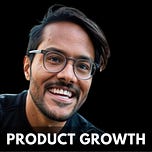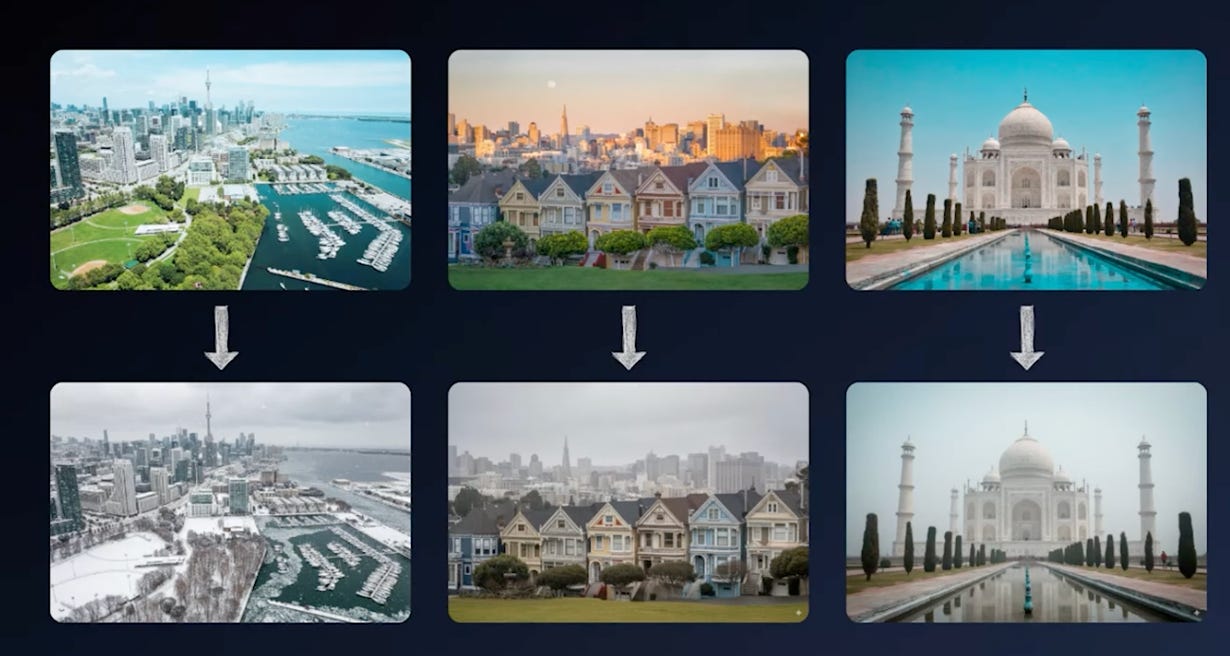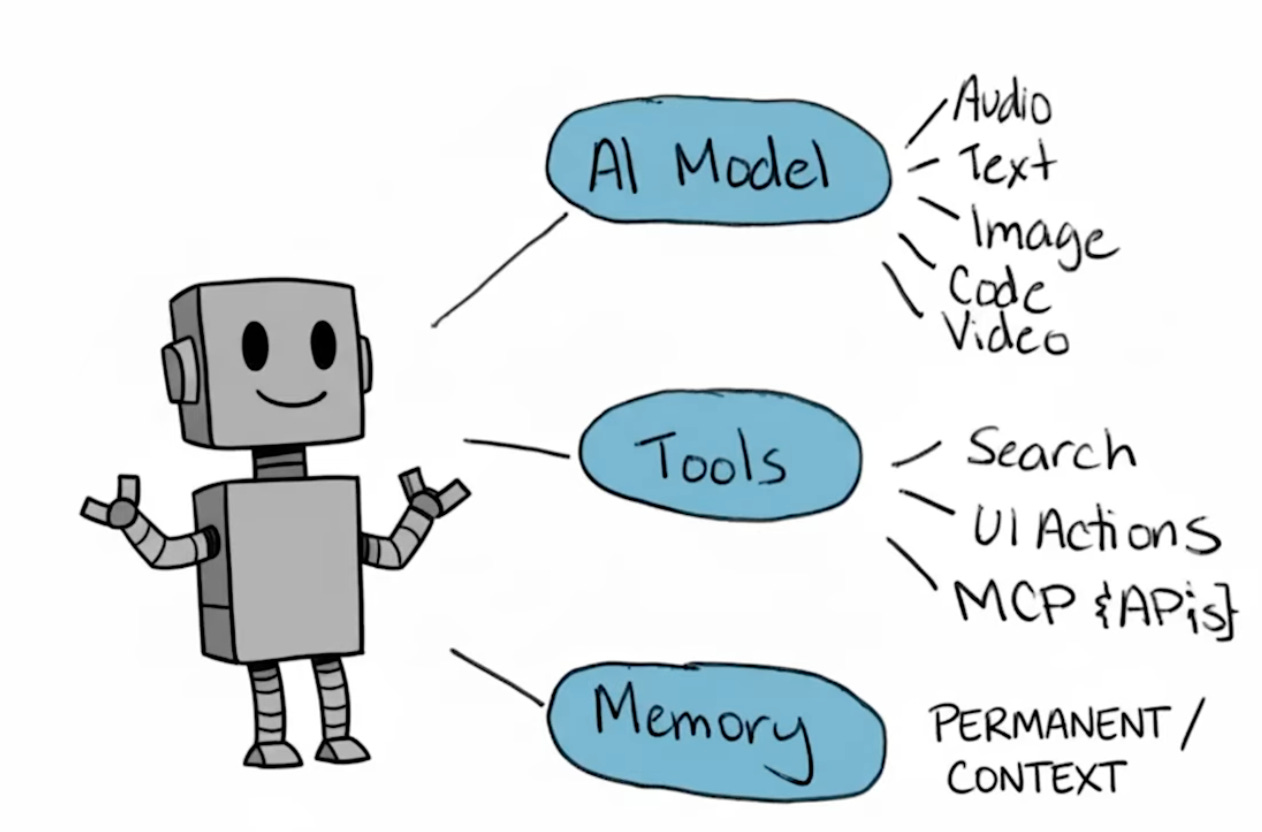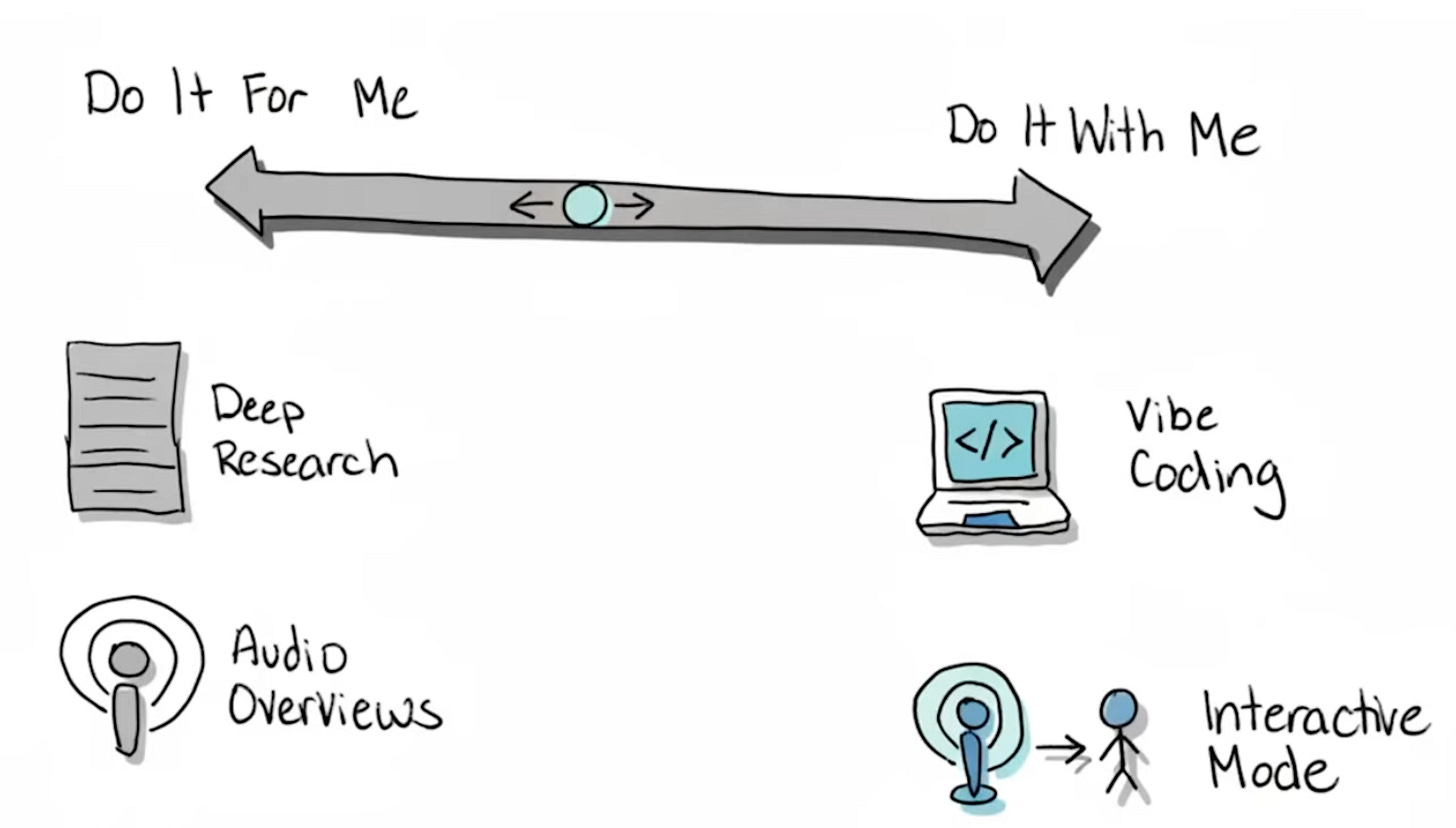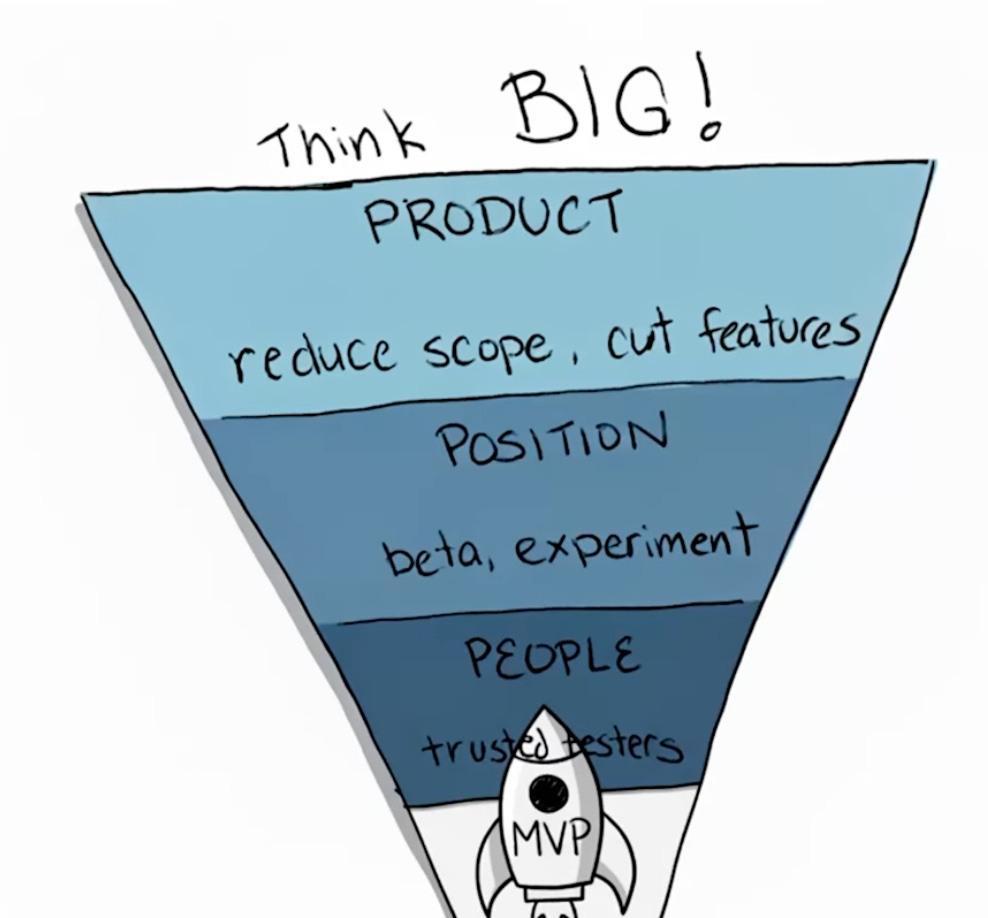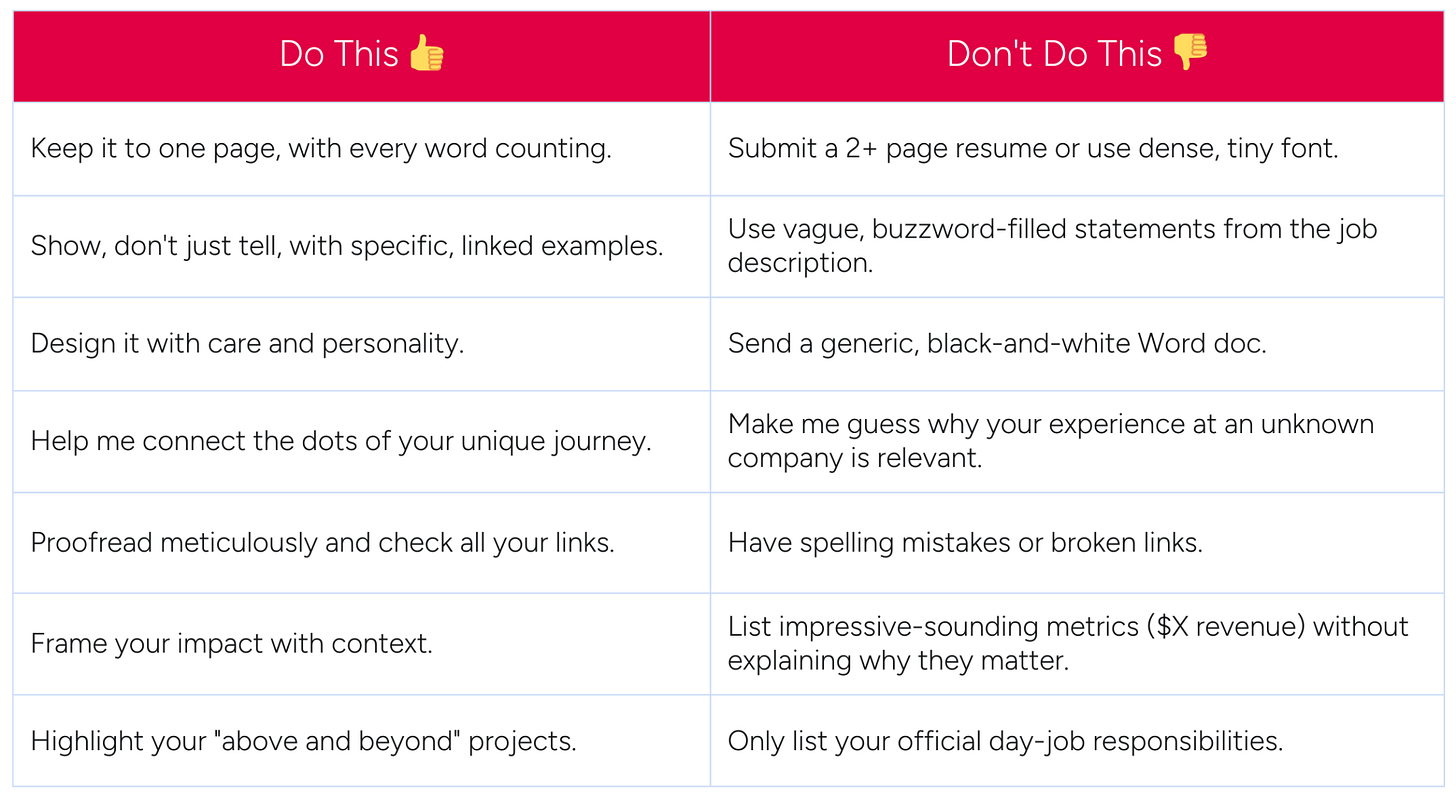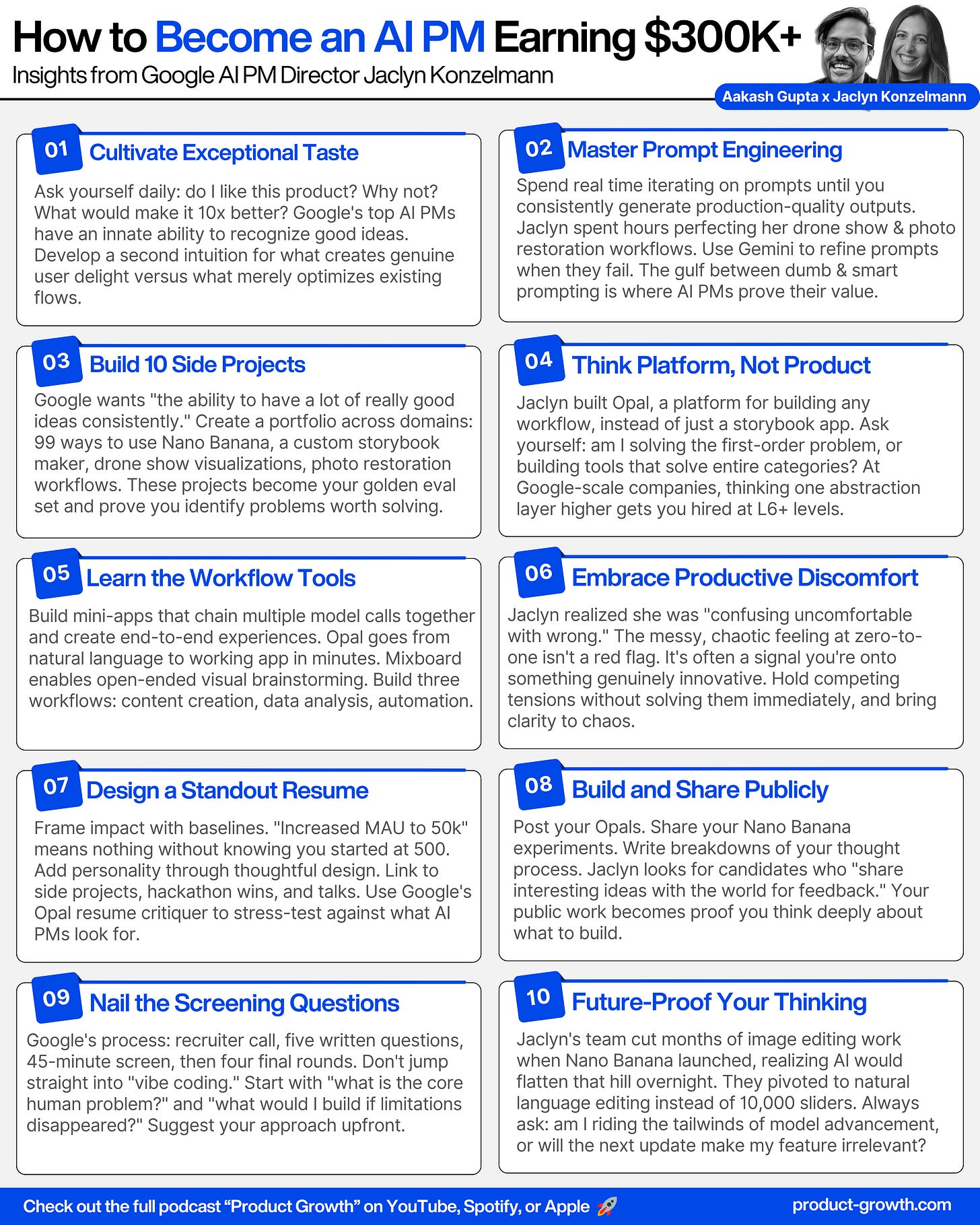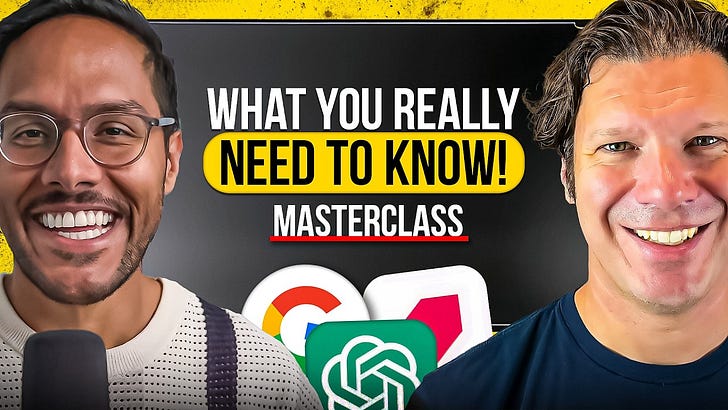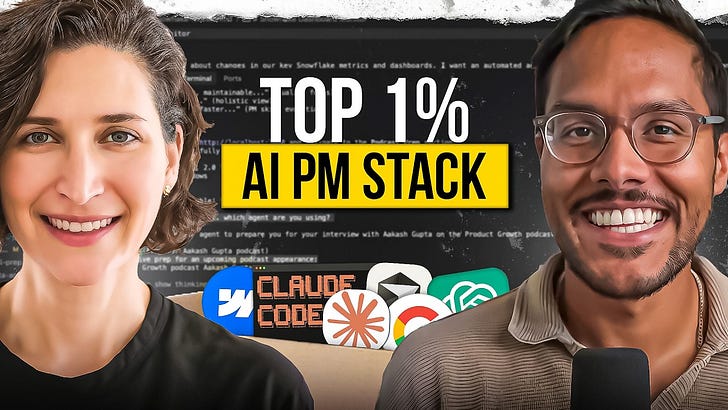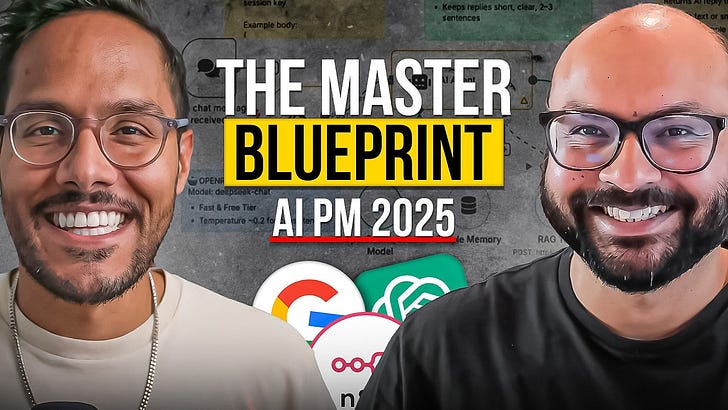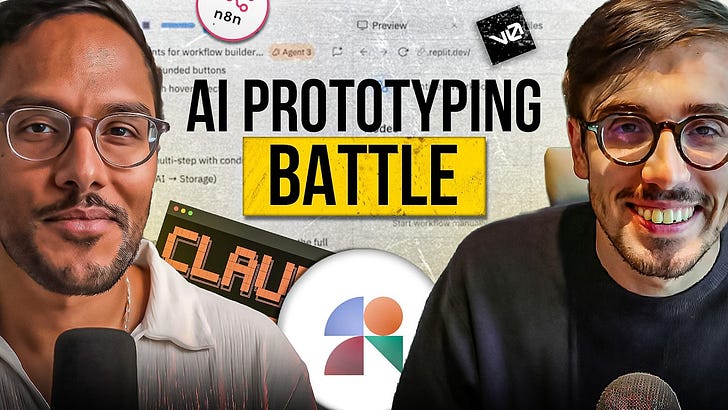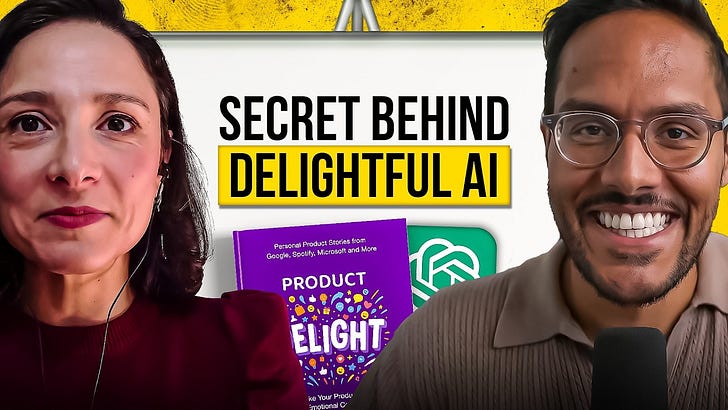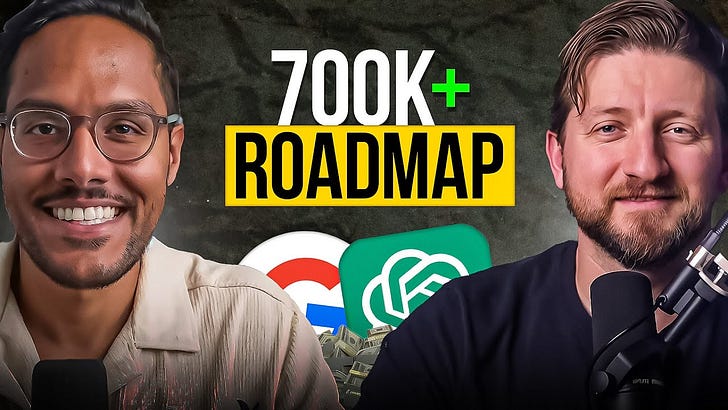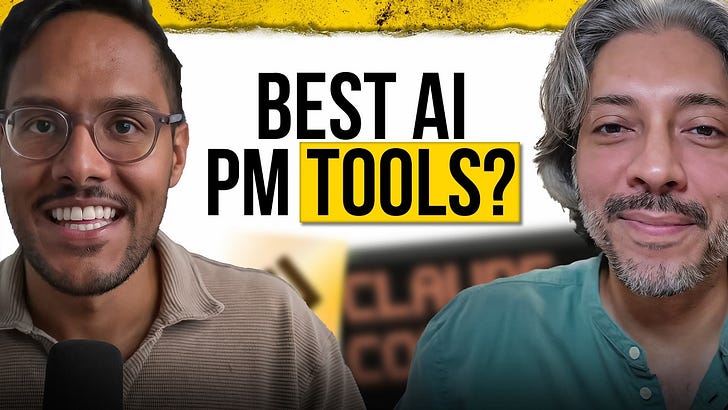Check out the conversation on Apple, Spotify and YouTube.
Brought to you by:
Pendo: #1 Software Experience Management Platform
Linear: Plan and build products like the best.
Jira Product Discovery: Plan with purpose, ship with confidence
LandPMJob: Join my cohort - only 17 spots left!
Today’s Episode
I had a precious hour of a Google AI PM Director’s time. So, I extracted all the best insights about AI PM for you:
How to use Google’s latest AI tools like an insider
How to build great AI products
How to become an AI PM
And I didn’t hold back on the tough questions. And Jaclyn Konzelmann dropped an absolute masterclass.
You don’t want to miss her advice on AI PM resumes...
Want me to coach you to an AI PM job? I’m coaching a group of 30 starting in 9 days. Join us.
Your Newsletter Subscriber Bonus
For subscribers, each episode I also write up a newsletter version of the podcast. Thank you for having me in your inbox.
Today’s guide covers:
The Insider’s Guide to Google AI Tools: Nano Banana, Veo 3, Opal & Mixboard
3 Frameworks Every AI PM Needs to Build
How to become an AI PM
1. The Insider’s Guide to Google AI Tools: Nano Banana, Veo 3, Opal & Mixboard
As a PM, you’ve probably heard about Google’s AI tools but haven’t learned how to use them like a pro.
Here’s how to unlock the magic:
Tool 1 - Nano Banana
Nano Banana is probably the world’s leading image model.
It’s biggest power is that it understands world models. Ask it to show Toronto in winter → adds snow. San Francisco in winter → no snow.
Jaclyn showed off an amazing workflow for colorizing old photos:
Use Gemini Pro to refine your prompt
Focus on: vibrant colors, lighting, hyperrealistic detail, modern camera optics
Add negative prompts for what didn’t work
If it doesn’t work out the first time, keep playing around with things and adjusting it until you get it just right.
—Jaclyn
Tool 2 - Chain Nano Banana to Veo 3 for Advanced Workflows
After image comes video. What’s the best way to do video? Seed it with an image.
Joclyn’s workflow is similar to the one I showed a few weeks back:
Find photo of her dog
Have Nano Banana reimagine it as a drone light show
Export to Veo 3
Prompt: “Turn into video where drones fly away”
The Result? A magical video of your dog as a drone show with tail wagging. This was a really “wow” moment for me.
And shows how you could create killer GTM videos for your product.
Tool 3 - Build Mini AI Apps with Opal
Opal chains prompts together to create workflows. Jaclyn built a custom AI PM resume critiquer live on the podcast.
You can just describe what you want in natural language. “An app that asks for a resume, critiques it against [this article], and offers suggestions.” Opal writes the entire prompt chain for you.
PM’s can use this to build a competitive analysis tool, create a user feedback analyzer, or any other workflow they dream up.
If you don’t have access to Lindy or Relay, but do have Google Workspace, this can be the agent tool you’ve been looking for.
Tool 4 - Mixboard
Chat is limiting for ideation.
Mixboard lets you explore multiple directions at once, perfect for moodboarding features, visualizing user flows, or rapid prototyping concepts.
Jaclyn’s workflow:
Took a horse painting.
Generated versions as “person winning a race,” “hiker,” “surfer” - all keeping the original brushstroke style.
It’s great for GTM assets and other images.
2. How to build great AI products
Joclyn distilled her years of learning into 3 key frameworks you should takeaway to build great AI products:
Framework 1 - The Anatomy of an Agent
Every AI agent has three core components:
Models: What capabilities? (text, image, audio, video, code)
Tools: What can it do? (APIs, search, UI actions like Project Mariner)
Memory: What should it remember? (user context, personalization, success metrics)
Start by defining these three before you write code or PRDs.
Framework 2 - The User Interaction Spectrum
Every AI product falls somewhere here:
Do It FOR Me: Deep Research, Audio overviews (runs for minutes, returns when done)
Do It WITH Me: Vibe coding, Interactive NotebookLM (seamless back-and-forth)
The key question: How much user involvement do you want? This determines your entire UX design.
Framework 3 - The Inverted Triangle (Think Big, Ship Fast)
The biggest trap in AI: spending weeks building something that gets commoditized by the next model update. Jaclyn’s solution:
Think REALLY big → Then use three levers to ship fast:
Lever 1 - Scope: Opal launched without calendar, email, tons of integrations. Shipped with docs and sheets first.
Lever 2 - Positioning: Use labels (Beta, Experiment, Early Access) to set expectations
Lever 3 - Audience: Internal → Trusted testers → Early access → Waitlist → Public
Real example: Her team spent months building image editing into Mixboard. Then Nano Banana dropped with natural language image editing. They threw out all that work.
Don’t hold on to it... be willing to let that go and build for what’s next.
—Jaclyn
3. Landing an AI PM Role at Google
Jaclyn is actively hiring AI PMs. Here’s exactly what she looks for and how to get there.
3a. The 6 Characteristics She Screens For
Build these into your background over the next 12-18 months:
Exceptional AI Product Sense: Innate ability to know what’s a good idea
Visionary Leadership: Can you predict what comes next? Think five steps ahead
Clarity in Chaos: Can you lead teams through uncomfortable, ambiguous periods?
Compelling Product Storytelling: Traditional data-driven approach doesn’t work for net-new AI products
Full-Spectrum Execution: Role profiles are blending (PM, eng, design). Jump in wherever needed
Deep AI Intuition: Ability to have lots of good ideas consistently. Don’t get precious about one idea
3b. The Resume
Here’s how to build a great AI PM resume:
Keep it short (1 page is best)
Show, don’t just tell - Link to actual examples
Skip vague buzzwords - Show you meet requirements, don’t repeat them
Design with personality - Creativity matters
Frame impact with context - Don’t just say “50K MAU”
Highlight side projects - Side projects, hackathons, speaking
I’m growing a clips & an AI channel. Please give them some love and subscribe. It’s free.
Where to Find Jaclyn Konzelmann
Email productgrowthppp at gmail dot com if you’d like to advertise.
Related Content
Podcasts:
Newsletters:
Want my coaching to your dream AI PM job? Apply to grab one of the remaining 17 seats in my cohort:
P.S.1 More than 85% of you aren’t subscribed yet. If you can subscribe on YouTube, follow on Apple & Spotify, my commitment to you is that we’ll continue making this content better.
P.S.2 I’d really appreciate ratings + reviews on podcast platforms as well.

